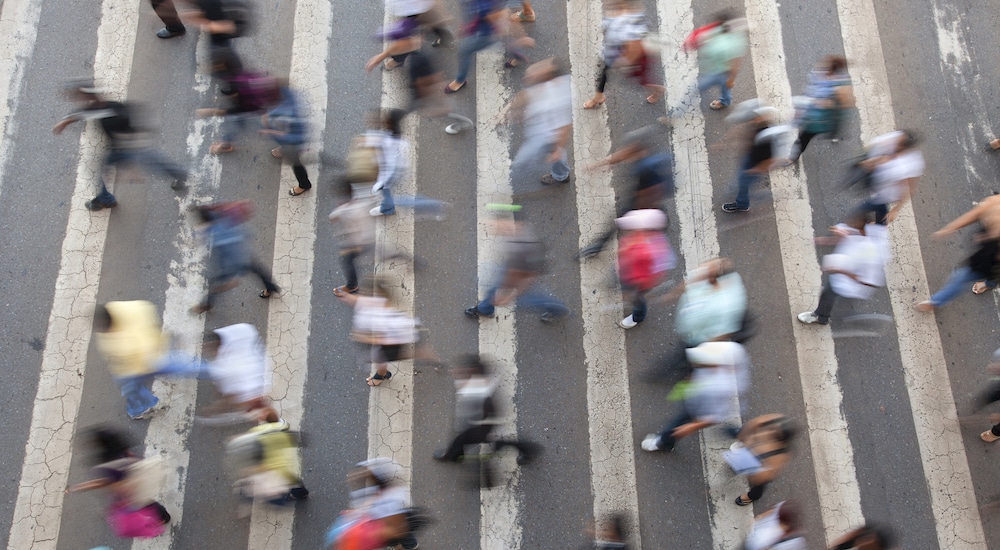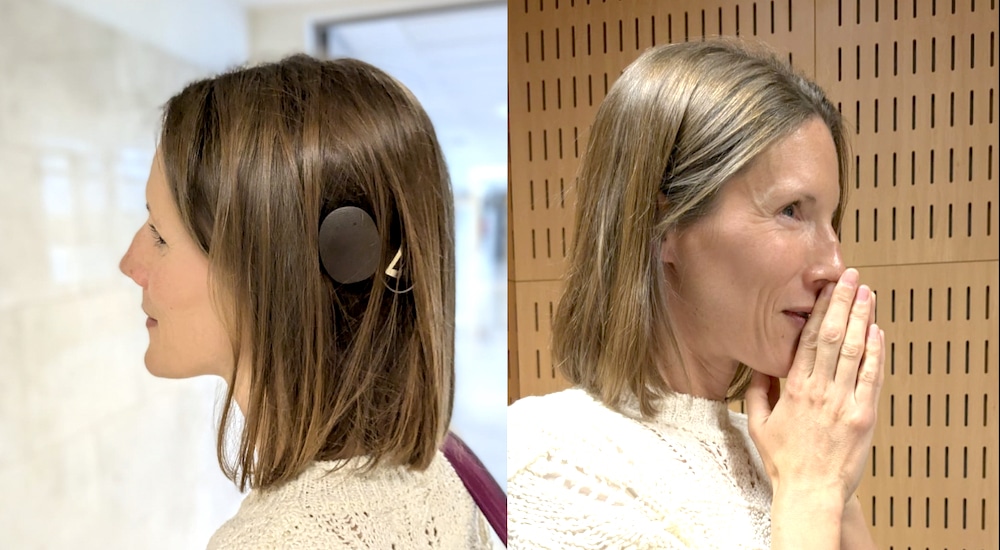YOU and the NIGHT and the MUSIC
Go out, have a good time...but do you need to lose your hearing? Club and nightspot owners want to find the right balance to keep workers - and paying customers - happy but healthy. Read on.

Loving it loud has always been an unchallengeable social prerogative in the places and spaces of our beloved nightlife recreation.
But so too, once upon a time not very long ago, was helping to fill venues large or small, and confined, with non-stop cigarette smoke. That was stopped to protect people’s lung health.
So, what about lug health? Are stricter preventative measures needed to restrict decibel levels in clubs, bars, and music venues? Or can club owners make a difference through education and other mechanisms?
With the UK’s Night Time Industries Association (NTIA) currently embracing the spirit and sense of the World Health Organisation’s Make Listening Safe campaign, complete with its facts and figures, it would seem this is not the right time for night time businesses to have their music volume savagely overridden by lawmakers. The representative body of these enterprises is taking the initiative.
NTIA CEO, Michael Kill, who is leading the organisation’s own recently-launched drive to help safeguard people’s hearing across the sector – from bar staff, performers, security and crew – talked to Audiology News UK about a long-term commitment to finding the right balance between offering an “authentic experience” in nightspots and managing people’s hearing and their exposure to damaging noise.
The NTIA is not just partnering with the WHO, but reaching out to find strong associates across the health sector and public administration, while seeking top advice at this early stage from a range of experts that so far includes Rob Shepheard (NHS Consultant Clinical Audiologist and member of WHO Make Listening Safe working group), Biff Mitchell (organiser of Glastonbury and Beautiful Days festivals), and sound specialist Lindsay McIntyre (KSG Acoustics).
“The campaign that we’re looking to engage in is not a short term thing,” says Kill. “It’s a continual drive to ensure that people can protect their hearing but enjoy culture at the same time,” he points out.
Education, testing, protection
As the NTIA works on formulating a consistent strategy, Kill breaks the process down into three stages; 1) education and awareness; 2) making testing available and accessible to people; 3) ensuring that people get the correct protection for their hearing.
On that first stage of awareness, Kill points out that NTIA released a tinnitus-focused advert on the 2023 World Hearing Day Listen for Life campaign. “So we’re looking to expand on that in terms of the awareness, but we’re just finalising some of the pieces with regard to clubs, venues, festivals, events, etcetera, and how that’s going to be portrayed, because all of them are very different environments and different cost bases.”
In relation to the second phase, Kill adds: “We’ve got other partners that we’re just trying to to land that are going to give us a really simple solution to testing and the implementation of the protection, particularly things like the moulded hearing protection for artists and DJs, which are kind of fundamental at the level of work and exposure that they face.”
The third stage, says Kill, needs to be “a proposition that is going to give people hearing protection, which is going to have a long term effect. It’s not just a one-off throw-away; it’s something they can consistently have with them when they go out or take an active part in events or clubs”.
For this CEO, himself a sufferer from tinnitus, music is one of the biggest casualties of hearing loss. “I’ve got very close friends, DJs, etcetera, that, you know, are my age now, sort of 50s, and they’re struggling with their hearing. Tinnitus and hearing loss is something that’s very prevalent, particularly in our age groups,” he recognises.
“In the long term future, the reality is our greatest asset for music is our hearing. So, you know, why would we not want to protect it, elongate the opportunity to enjoy culture in in different forms?” Kill underlines.
Desire to have your hearing protected
Given the WHO stats on young people seemingly rushing willfully towards hearing damage (see box), one might justifiably wonder whether a significant proportion of nightlife lovers would really accept protection. Won’t most consider going commando with one’s naked ears part of the thrill of it all? The NTIA, whose target audience of 18 through 50 is a little older than the WHO’s target of ten-years-old to 40, is led by a man who is optimistic about the intelligence of his target.
“The one thing that we are seeing is there is appetite and there is intelligence around understanding their awareness of their hearing health, as much as there is an awareness of their sort of alcohol consumption,” he argues. “And, you know, people are a lot more savvy than they’ve ever been. And I think it’s that pivotal point where we can now start to engage and let them know we want you to enjoy culture. This is not about stemming or changing what you have. It’s just about allowing you to enjoy it with a safeguard.”
In addition to the more universal numbers the NTIA is relaying from the WHO, the body is placing emphasis in its awareness messages on details that resonate with current topics in healthcare, and with the ever-loud and unavoidable track of money, money, money:
- A report from the Commission on Hearing Loss 2014 calculated the cost of hearing loss to the UK economy to be £24.8bn, which will potentially rise to £38.6bn by 2031.
- Dementia– Hearing loss is the biggest modifiable factor in a person’s life course that will increase the risk of dementia. Mild hearing loss doubles your risk, Moderate hearing loss trebles it and a severe hearing loss means a person is FIVE times more likely to suffer dementia.
- One in six people are impacted by hearing loss in the UK, our aim alongside partners and key stakeholders is to reduce that number across our sector through awareness and education so that people can listen to music safely within the workplace, social or personal environments.
Decades of calls for action on venue noise levels
Pressure on venue owners to act on hearing damage from noise goes back many years. At least as far back as 1985, the Medical Research Council was banging the drum (gently) on damage to hearing from leisure noise (UK, MRC Institute of Hearing Research Damage to hearing arising from leisure noise: a review of the literature, 1985, xvi.+200 pp.). Distant echoes of that literature review came along in 2004 when the RNID published its report A Noise Hangover?, which detailed results of a survey that measured noise levels in three different areas within fifteen nightclubs in five UK cities – London, Manchester, Cardiff, Edinburgh and Belfast. The findings revealed that, in some venues, the noise was “as loud on the dance floor as an aircraft taking off (approx 110dB(A))”.
“The findings show that little has changed since a review of the literature was conducted by the MRC Institute of Hearing Research (1985),” said the RNID, its then CE Dr. John Low, adving: “Since the launch of RNID’s Don’t Lose the Music campaign last year, we’ve been advising people to protect themselves against the cumulative effects of loud music by taking regular breaks and by using the chillout areas to give their ears a break. This new survey shows that clubbers following our advice are being let down by club owners who are failing to provide this space.”
The RNID said at that point that it believed “clubbers and club owners have a joint responsibility to protect clubbers’ hearing”.
In 2019, a UK working group of the France-based umbrella-association of the European associations of live-music venues, clubs and festivals – Live DMA (Developing Musical Action) – strongly advised that “where the Event LAeq (Equivalent Continuous Sound Pressure Level) is likely to exceed 96 dB, [organisers should] advise the audience of the risk to their hearing in advance, (eg either on tickets, advertising or notices at entry points)”.
More recently, in November 2022, the Musicians’ Union (MU) issued a strong appeal on noise levels in venues, pointing out that noise at work issues are covered by The Control Of Noise At Work Regulations 2005 (CNWR), and referring employees to the 2008 publication of the guidance Sound Advice.
The MU stressed that list of measures contained in noise regulations “is not exhaustive and we are asking employers to explore any other reasonable avenues open to them”.
MAKE LISTENING SAFE – a WHO campaign
The World Health Organization (WHO) estimates that a billion young people worldwide could be at risk of hearing loss due to unsafe listening practices.
• Over 43 million people between the ages of 12–35 years live with disabling hearing loss due to different causes.
• Among teenagers and young adults aged 12–35 years in middle- and high-income countries: around 40% are exposed to potentially damaging sound levels at clubs, discotheques and bars.
According to the World Health Organisation: “At nightclubs, discotheques and bars, average sound levels can range from 104 to 112 dB; noise levels at pop concerts may be even higher. Patrons may expose themselves to the same level of loudness in 15 minutes of music at 100 dB that an industrial worker gets in an 8-hour day at 85 dB. Even a short duration of exposure to high-decibel levels such as these can be harmful. Habitual exposure almost certainly leads to hearing loss over time.”
Source: Audiology New UK issue 02 May-June 2023





